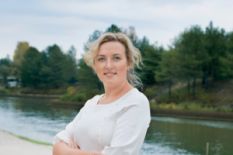Serhiy Korolyov
 The history of Soviet-American space race started way back in 1907 when Serhiy Pavlovych Korolyov was born in Zhytomyr. At the age of six, he visited an air show, which ignited his interest in aero engineering. He began designing and building gliders and soon obtained education in aircraft construction.
The history of Soviet-American space race started way back in 1907 when Serhiy Pavlovych Korolyov was born in Zhytomyr. At the age of six, he visited an air show, which ignited his interest in aero engineering. He began designing and building gliders and soon obtained education in aircraft construction.
The most notable achievement of Korolyov's missile era — the first in the world intercontinental ballistic missile R-7 — was successfully launched on August 27 in 1957. In the late 50s, Korolyov turned his attention to space. His designs and constructions were the reason for one more pioneering event: the launch of the first artificial 'Sputnik' satellite in 1957. Fueled by success, Korolyov began to work on another spacecraft. In 1961, the world celebrated the first manned spaceflight in history — the Soviet cosmonaut Yuri Gagarin on board of the Vostok-1 spacecraft, designed by Korolyov.
Nowadays Korolyov's discoveries are commemorated in a space museum in Zhytomyr named after the Ukrainian scientist. The museum exposition boasts two real rockets, R-12 and R-5V, located right in its yard. Visitors can also check out artifacts that have been to space and back: Soyuz-27 spacecraft, autographed by cosmonauts Vladimir Dzhanibekov and Georgy Grechko, real flight, emergency and training suits and a sample of lunar soil.
Igor Sikorsky
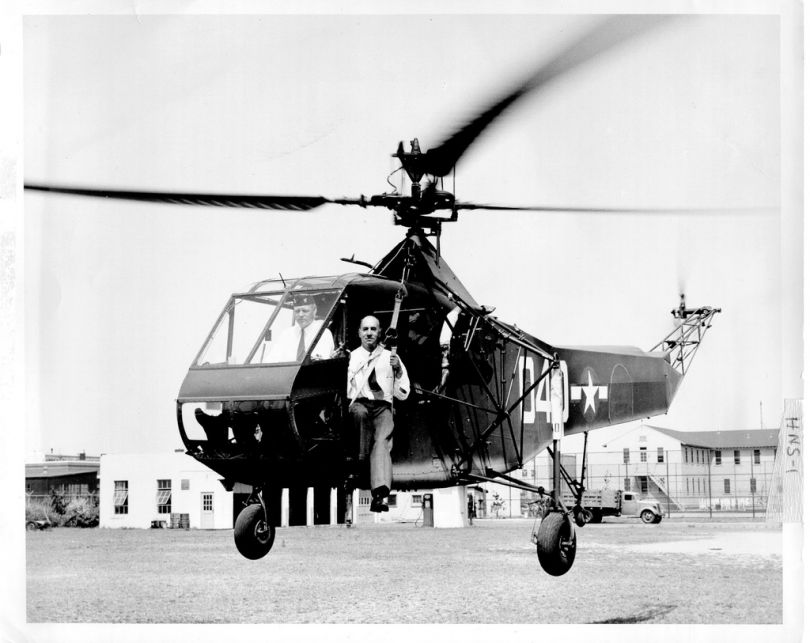 Serhiy Korolyov wasn't the only Ukrainian pioneer in the field of aircraft. Igor Sikorsky, born in Kyiv in 1888 is most famously known for inventing the world's very first helicopter. His career began in 1907 when he enrolled in the studies at the Kyiv Polytechnical Institute. Igor constructed his first helicopter model at the age of 19 and several years later, his C-2 airplane performed its first flight.
Serhiy Korolyov wasn't the only Ukrainian pioneer in the field of aircraft. Igor Sikorsky, born in Kyiv in 1888 is most famously known for inventing the world's very first helicopter. His career began in 1907 when he enrolled in the studies at the Kyiv Polytechnical Institute. Igor constructed his first helicopter model at the age of 19 and several years later, his C-2 airplane performed its first flight.
Sikorsky gained a pilot diploma in 1911 and then proceeded with engineering, building and testing his inventions. In 1912-1914, he created Grand and Ilya Murometz airplanes, which laid the foundation of multi-engine aviation. Like many scientists of the time, Sikorsky immigrated to the USA in 1919. In 1923, he established Sikorsky Aero Engineering Corporation.
By the beginning of the WWII, he engineered more than 15 types of airplanes and invented a single rotor configuration helicopters with swashplate. The experimental model quickly gained popularity to such a degree that the first flights across Atlantic and Pacific oceans were performed by Sikorsky helicopters. In 1963, Igor Sikorsky was awarded ASME medal, the highest award of American Society of Mechanical Engineers.
Yuriy Kondratiuk
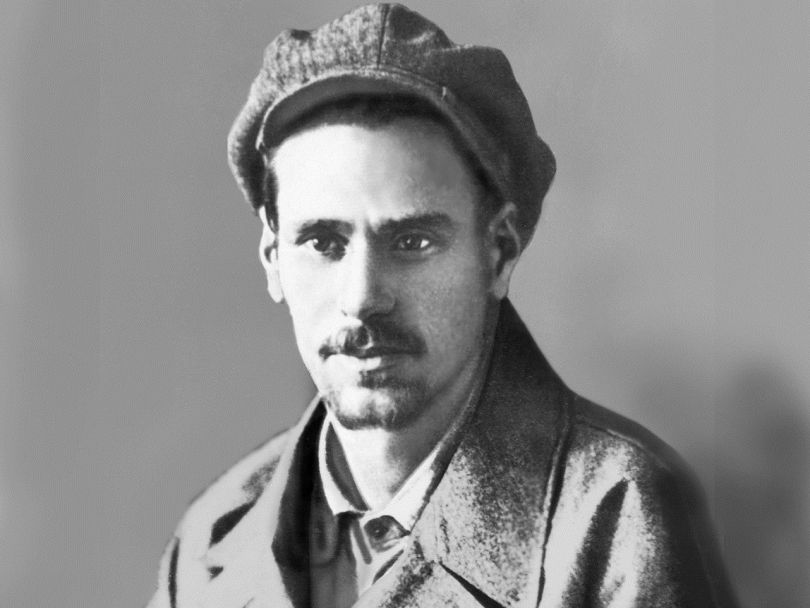 Another famous Ukrainian scientist was Yuriy Kondratiuk, whose real name is Alexander Shargey. The reason behind the name change was the man’s fear of being arrested by Bolsheviks due to his Tsarist past. In 1921 he got the documents for the name Yuriy Kondratiuk and lived under this name for the rest of his life. Due to the rocky political situation in the country, Yuriy Kondratiuk escaped to Kuban’ and found a job on Krylovsky grain elevator. This was the beginning of his scientific path.
Another famous Ukrainian scientist was Yuriy Kondratiuk, whose real name is Alexander Shargey. The reason behind the name change was the man’s fear of being arrested by Bolsheviks due to his Tsarist past. In 1921 he got the documents for the name Yuriy Kondratiuk and lived under this name for the rest of his life. Due to the rocky political situation in the country, Yuriy Kondratiuk escaped to Kuban’ and found a job on Krylovsky grain elevator. This was the beginning of his scientific path.
In his books, Yuriy described the sequences of space exploration stages. In 1929, he completed his main scientific work, Conquest of Interplanetary Space. This unique book tells about rocket bases functioning as planets’ satellites; usage of particular metals (magnesium, lithium, aluminum) for a rocket propellant; and most importantly, LOR - lunar orbit rendezvous. The notion was so revolutionary it is still considered the first known plan of landing and return of the spacecraft to the Moon and back. In fact, Yuriy Kondratiuk’s calculations were used by NASA in their lunar program. The trajectory developed by the scientist is called Kondratyuk's loop.
Illia Mechnykov
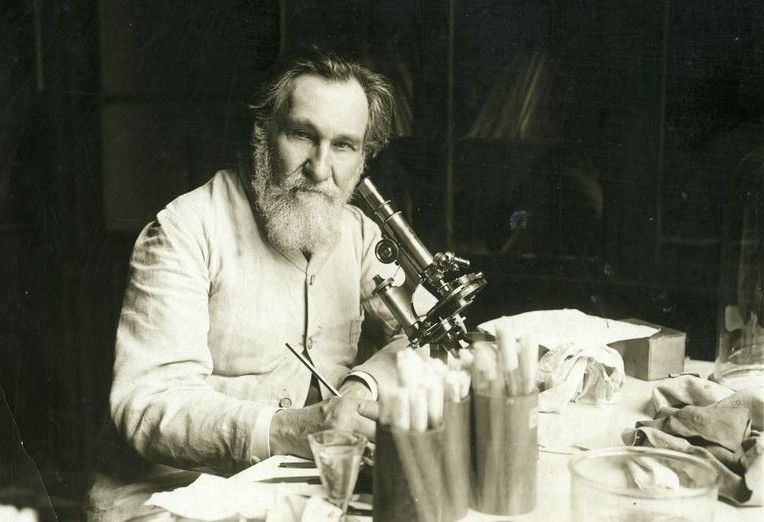 Illia Mechnykov is widely known as the 'father of natural immunity'. During his lifetime, the scientist was awarded an honorary degree from the University of Cambridge and honorary membership in the Academy of Medicine in Paris. The epitome of his career is the Nobel Prize he won in 1908 for extraordinary research in the field of immunology.
Illia Mechnykov is widely known as the 'father of natural immunity'. During his lifetime, the scientist was awarded an honorary degree from the University of Cambridge and honorary membership in the Academy of Medicine in Paris. The epitome of his career is the Nobel Prize he won in 1908 for extraordinary research in the field of immunology.
The scientist's way to success began in a tiny village of Ivanovka located near the modern city of Kharkiv. The young Mechnykov quickly developed the interest for natural sciences and was persuaded by his mother to pursue a career in this field. Mechnykov first proved his exceptional talent by completing his four-year Bachelor degree at Kharkiv University in two years. He soon went to Germany where he worked hand-in-hand with Rudolf Leuckart and made his first discoveries in the marine fauna.
Mechnykov ultimately continued his studies in the Russian Empire, namely Moscow and Saint Petersburg, but was forced to move to Odesa due to the conflicts in the academic environment. It was in Odesa where he delivered his first notable discovery in immunology - phagocytosis. His theory, however, was met with skepticism from his colleagues side as it surpassed the common scientific views of the time. Luckily, Mechnykov didn't give up on his research and ultimately was rewarded by a Nobel prize in 1908. He soon moved to Paris, where he wrote numerous studies and lived for the rest of his life. Nowadays, many Ukrainian streets bear the name of this renowned scientist.
Alexander Bohomolets
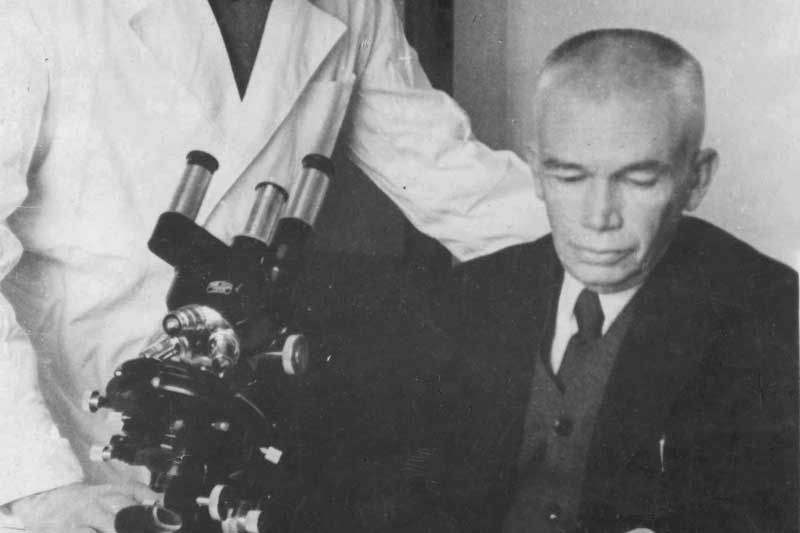 Alexander Bohomolets is another pioneering Ukrainian inventor in the medical field. Born in 1881 in a troubled family, Alexander was first home-schooled and then studied at a boy's gymnasium and Chișinău academy. While initially the young man aimed to become a criminal lawyer, the studies disillusioned Alexander and he transferred to the medical faculty of the Kyiv University (modern Taras Shevchenko University). In 1901, he transferred once again - now to the Odesa university. During his college years, Alexander was highly interested in endocrinology and immunology.
Alexander Bohomolets is another pioneering Ukrainian inventor in the medical field. Born in 1881 in a troubled family, Alexander was first home-schooled and then studied at a boy's gymnasium and Chișinău academy. While initially the young man aimed to become a criminal lawyer, the studies disillusioned Alexander and he transferred to the medical faculty of the Kyiv University (modern Taras Shevchenko University). In 1901, he transferred once again - now to the Odesa university. During his college years, Alexander was highly interested in endocrinology and immunology.
The late 1910s became the revolutionary era not only for the former Russian Empire but for Alexander as well - he developed antireticular cytotoxic serum, which was successful in the treatment of wounds. The serum essentially activated the immune system thanks to its unique properties and precise dosage. In total, Bohomolets wrote more than 150 fundamental works on medicine, namely life extension. He was the author of the first book in pathophysiology in the USSR. Nowadays, the National Medical University of Ukraine bears his name.
The Paton Family
Paton's name might be familiar to those who live in Kyiv and drive on the city's longest bridge. It's interesting that Paton Bridge is also the first all-welded bridge in the world. It was constructed thanks to the efforts of Yevhen Paton, a notable engineer, who brought one of its most famous Ukrainian inventions and first of the Paton family to be renowned for his work.
Yevhen Paton was born in 1870 in Nice and soon moved to Dresden to study welding. Paton then obtained a status of Professor at the Kyiv Polytechnic Institute. Founding of the Electric Welding Institute in Kyiv by Yevhen Paton paved a way for the discoveries now used in the whole world. Paton was a pioneer of welding and constantly invented new methods: for instance, he researched rational bridge spans and the mechanization of welding processes.
Yevhen's son, Borys, continued his father's path. During his lifetime, Borys Paton wrote more than a thousand scientific works and even broke the world record at being the oldest president of the Academy of Sciences in the world. It's not surprising, given that the Academy was founded on the same year Paton was born on November 27 in 1918. Today, Borys is 99 years old, takes part in civic activities and enjoys sports.
Nikolai Amosov
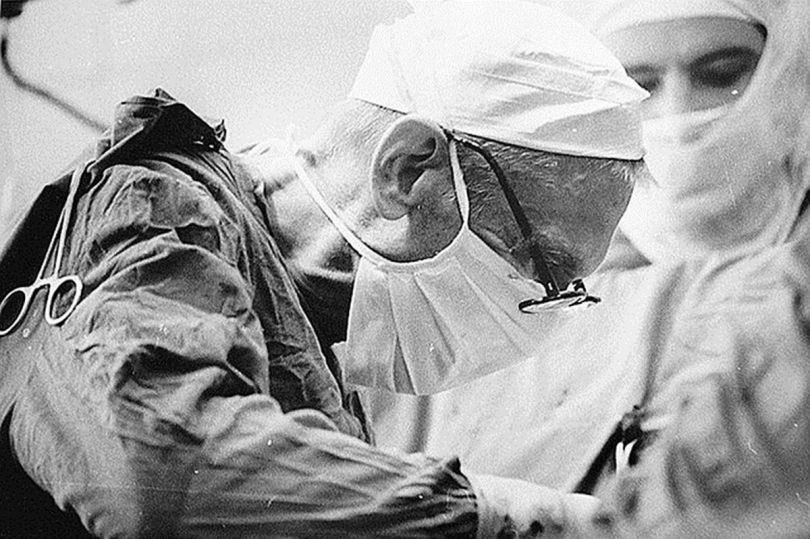 Nikolai Amosov was born in a poor peasant family in 1903. Like many great personalities, the financial status didn't stop Nikolai from becoming a pioneer of world medicine. He first studied at a mechanical college and then pursued an education in medicine, graduating in 1939. During the World War II, he was working as a military surgeon and performed more than four thousand surgeries. In 1953, Nikolay defended his doctoral dissertation and became the Department Head in Kyiv Medical Institute. Merely two years later, he became one of the first doctors in the world to treat and cure a cardiac defect.
Nikolai Amosov was born in a poor peasant family in 1903. Like many great personalities, the financial status didn't stop Nikolai from becoming a pioneer of world medicine. He first studied at a mechanical college and then pursued an education in medicine, graduating in 1939. During the World War II, he was working as a military surgeon and performed more than four thousand surgeries. In 1953, Nikolay defended his doctoral dissertation and became the Department Head in Kyiv Medical Institute. Merely two years later, he became one of the first doctors in the world to treat and cure a cardiac defect.
A notable discovery by Amosov, a heart-lung apparatus, is used worldwide even nowadays. In 1962, Nikolai pioneered in heart surgeries: he was the first to use an artificial cardiac valve. In the same year, he was assigned the status of the Associate Member of Medical Sciences Academy. In 1983, Nikolay Amosov became the Head of Vascular Surgery Institute. During his lifetime, Amosov performed more than 10 000 surgeries and wrote numerous studies on heart, lungs, and anti-aging.
Jan Zech and Ignacy Lukasiewicz
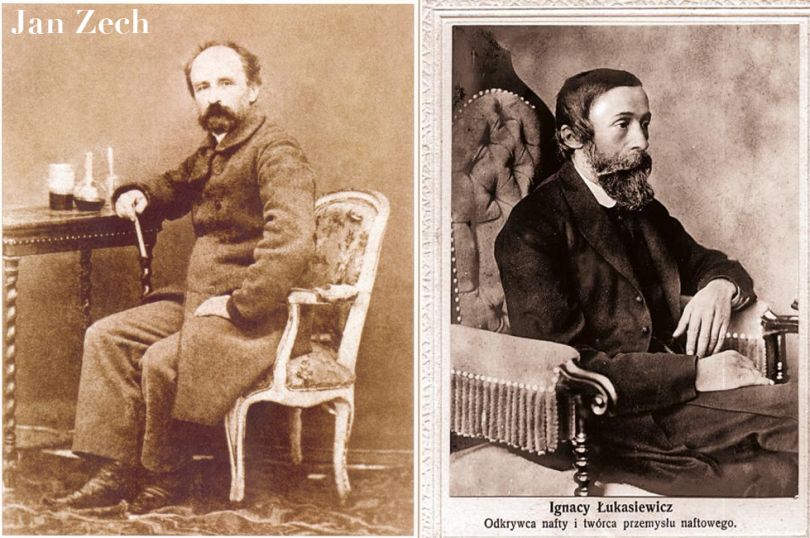 Lviv boasts the status of the Coffee Capital of Ukraine and it's not surprising given that a Ukrainian Cossack was first to bring the Middle Eastern drink to Europe. Apart from coffee, Lviv has one more invention that once influenced the whole world. In the middle of the 19th century, Lviv was a well-known oil production center in Europe. At the time, oil was very cheap - that's why the owner of «Under the Gold Star» Lviv pharmacy decided to distill alcohol out of oil. In 1852, two employees of the pharmacy, Jan Zech and Ignacy Lukasiewicz, started working on the task.
Lviv boasts the status of the Coffee Capital of Ukraine and it's not surprising given that a Ukrainian Cossack was first to bring the Middle Eastern drink to Europe. Apart from coffee, Lviv has one more invention that once influenced the whole world. In the middle of the 19th century, Lviv was a well-known oil production center in Europe. At the time, oil was very cheap - that's why the owner of «Under the Gold Star» Lviv pharmacy decided to distill alcohol out of oil. In 1852, two employees of the pharmacy, Jan Zech and Ignacy Lukasiewicz, started working on the task.
While the scientists didn't succeed, they came up with another, even more, important discovery - kerosene. It burnt well and had a bearable odor, that's why the pharmacists patented their invention in Vienna that year. Zech and Lukasiewicz asked a local tinsmith to make a lamp with a kerosene tank. While the locals weren't really interested in the new invention, the doctors certainly appreciated it. Kerosene lamps lit the surgeon's table way better than candles, and the duo's discovery quickly found its place in the Lviv's hospitals and soon around the globe.
Volodymyr Khavkin
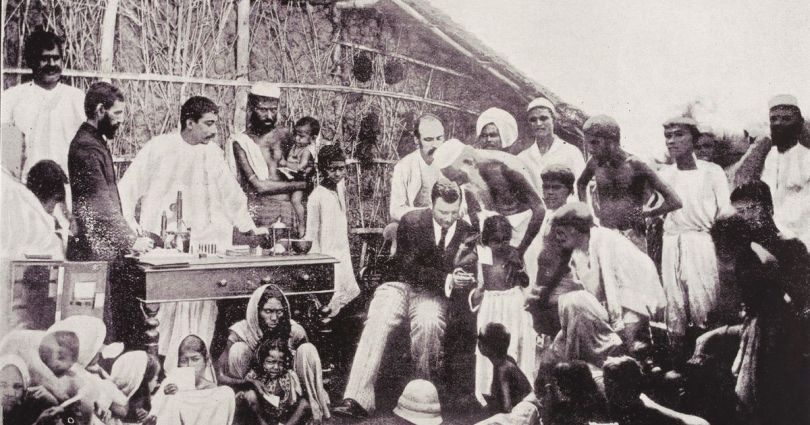 Volodymyr Khavkin, known in the international scientific community as Sir Waldemar Haffkine, once rescued the world from cholera and bubonic plague. His discoveries and hard work are commemorated by the genus Khawkinea named after him and Haffkine Institute in Mumbai. Khavkin was born in 1860 in a Jewish family in Berdiansk. Throughout his lifetime, he obtained an education in his hometown, Odesa and later Saint Petersburg.
Volodymyr Khavkin, known in the international scientific community as Sir Waldemar Haffkine, once rescued the world from cholera and bubonic plague. His discoveries and hard work are commemorated by the genus Khawkinea named after him and Haffkine Institute in Mumbai. Khavkin was born in 1860 in a Jewish family in Berdiansk. Throughout his lifetime, he obtained an education in his hometown, Odesa and later Saint Petersburg.
His Jewish faith was the crucial factor that prompted Hawkin to emigrate - he was arrested for defending a Jewish home during one of the pogroms that at the time happened all over Ukraine and Russia. The notable Ukrainian scientist of the era, Ilia Mechnykov, bailed him out and the fact stroke a long-time friendship and partnership. They worked together from 1879 to 1883 and some years later Khavkin joined Mechnykov at Pasteur Institute in France.
During this era of his life, Khavkin became the pioneer of vaccines against the illnesses that raged in India and took the lives of millions. It's notable that the young scientist tested his vaccines on himself first, risking his life. Despite the great risk and potential success, his anti-cholera discovery wasn't largely supported by his colleagues. However, Khavkin managed to test his vaccine in India that suffered from a large cholera pandemic. The cure proved to be effective, and in 1896 the Indian government asked Khavkin for help once more - this time, with the epidemic of bubonic plague. Once again, Khavkin tested a new vaccine on himself after three months of grueling research and trials. His discovery helped to decrease the number of deaths in Mumbai. Khavkin was then appointed Director of the Plague Laboratory, which nowadays bears his name.
Selman Waksman
 Another Ukrainian-born scientist that revolutionized medicine is Selman Waksman. The Jewish-Ukrainian invented more than 15 antibiotics throughout his lifetime, mostly renowned for discovering streptomycin that proved effective in tuberculosis treatment. Selman Waksman was born in 1888 in the tiny village called Nova Pryluka in the Vinnytsia Oblast. Waksman obtained an education in Odesa and moved to the USA in 1910. His scientific career surged forward after being awarded the Doctor of philosophy in biochemistry.
Another Ukrainian-born scientist that revolutionized medicine is Selman Waksman. The Jewish-Ukrainian invented more than 15 antibiotics throughout his lifetime, mostly renowned for discovering streptomycin that proved effective in tuberculosis treatment. Selman Waksman was born in 1888 in the tiny village called Nova Pryluka in the Vinnytsia Oblast. Waksman obtained an education in Odesa and moved to the USA in 1910. His scientific career surged forward after being awarded the Doctor of philosophy in biochemistry.
The most important period of Waksman's scientific career was spent at the Rutgers University of New Jersey, where he and his team pioneered in the field of tuberculosis treatment by inventing streptomycin, neomycin and several other effective antibiotics. Streptomycin proved to be so revolutionary it earned Waksman a Nobel Prize in 1952. Apart from the Nobel, Waksman received honorable awards like the Star of the Rising Sun and the rank of Commandeur in the French Légion d'honneur.
Naturally, it's difficult to grasp the full potential of the Ukrainian scientific field and its inventions in merely seven personas. The country's inventors once sparked major development in numerous fields from medicine to aircraft and still continue to astonish the world with new ideas.
Photo sources: polymus.ru, psychologylivelife.net, mirkosmosa.ru, haaretz.com, sigedon.com, orthedu.ru, youtube.com, uain.press, mg1.od.ua, unsplash.com. All images belong to their rightful authors.



